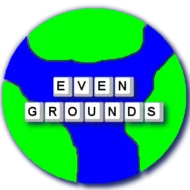One of my big finds this year was the WayTags which let me label things around me, and I discovered how to enhance my travel with WayAround. I had a few conversations with Jessica, and I was just amazed by the creativity people can use WayTags to make their lives easier. I was curious, how was such a great product born and all the ways it is used, so I asked Jessica for an interview, which you can read below.
Can You Briefly Describe What Wayaround Does and Why You Started the Business?
WayAround is an accessible labeling system that works with your smartphone. Our tags – the labels – come as stickers, magnets, buttons, and clips, and you can label just about anything with those types of tags. You tap your phone to the tag to read or write information you want to store, and the tags let you add a LOT of details.
Our cofounders, Darwin Belt and Armand Fisher, both have vision loss and are retired architects. They started WayAround to make public spaces more accessible, and along the way they realized that what they developed would also be useful for individuals to label their own things.
Is there anything people typically use WayTags for??
People often start by labeling daily living items: clothing, food, and medication. There’s often an a-ha moment when people realize they can label many more things beyond daily living basics: appliances, gardening tools and plants, knitting, and items for other hobbies.
What are some unexpected ways people have used WayTags that have surprised you?
There’s a blind cattle rancher who labeled his cows with WayAround, which I think is just so cool! He keeps track of the date of birth, vaccination schedule, and other medical information.
There are also people who use their WayTags to keep track of maintenance. One user does all of the vehicle maintenance for his large family, so there are quite a few cars. He has a keyring and keeps one tag per vehicle. On maintenance day, he scans through to determine what needs to be done. He adds a detail to the WayTag every time he completes an oil change or other maintenance. The WayTag serves as an accessible maintenance log. People do similar things with their home appliances.
By the way, if you tag something with a serial number, add the serial number to the WayTag so it’s accessible! They’re always in the most inconvenient places.
Can you describe a particularly challenging item to tag and how you addressed it?
I’m often asked how to tag food items that aren’t in cans or boxes. Almost always, the WayTag oval hole button is the answer. This is a black plastic button with an oval hole in the middle. You can loop a rubber band, or even better a silicone band, through the hole and make a slip knot. The silicone bands come in all different sizes so you can attach it to the handle of a milk jug or even a frozen pizza. For people who do batch cooking and freeze large quantities, they can add what the food is and any instructions for finishing the meal.
Do you know if sighted people use WayTags?
Yes! WayAround has a following of people who collect exotic plants, mostly indoor plants. There’s one collector who has about 150 plants, and she records the watering and fertilizing requirements for each plant. Every time she waters the plant, she adds a note to the WayTag.
I’m sighted, and I tagged my electrical fuse box. It’s in my basement and whenever power goes out I love being able to use my phone to easily get the information. I even included instructions for starting up the generator.
How has feedback from the visually impaired community influenced the development of WayAround?
Feedback from our users is really important. Because our cofounders both have vision loss and use screen readers, they pay close attention to the user experience for people with screen readers. A lot of people tell us how easy it is to use. Sometimes we find a bug that will come about with a certain operating system in combination with certain accessibility issues. Even though we do a lot of testing, we rely on our users to let us know what they’re experiencing and how it can be improved. And the great thing is that when you contact us, you always get a real, live human.
What was your biggest challenge when you developed your product?
When we first started, NFC – the Near Field Communication technology behind WayAround – wasn’t as widely used. In fact, iPhones only allowed NFC use for payments. Thankfully they opened up what was available to other developers right around the time we launched WayAround.
This interview wouldn’t be complete if we didn’t talk about AI? How do you think AI will shape object identification in the future? Are you planning to implement any AI features?
For certain objects, AI is great at identification. In fact, Darwin often uses AI to initially describe an object and then he copies the AI description to a WayTag. There’s often quite a bit of extraneous information with the AI description, so he copies only what he needs. The next time he has to identify that same object, tapping a WayTag is much faster than using AI. Plus, he has curated the relevant information so he doesn’t have to listen to a long description that’s not useful to him.
Right now, we aren’t planning to build any AI features into the app. It’s really important to keep WayAround affordable – the app is free – and there are several really good AI apps specifically for accessibility that people can use in tandem with WayAround. But down the road, I could see us partnering with another app or even incorporating AI into WayAround.
If people want to try out your products, how can they do it, where can they meet you?
They have a great YouTube channel with lots of how-to videos. They have also partnered with a blind Occupational Therapist who shows how to layer good organizational techniques with WayAround. She’s the most organized person I’ve ever met! You can purchase WayTags from their website – WayAround.com – or through one of their distributors.


The way you articulate your experiences helps build empathy and awareness.